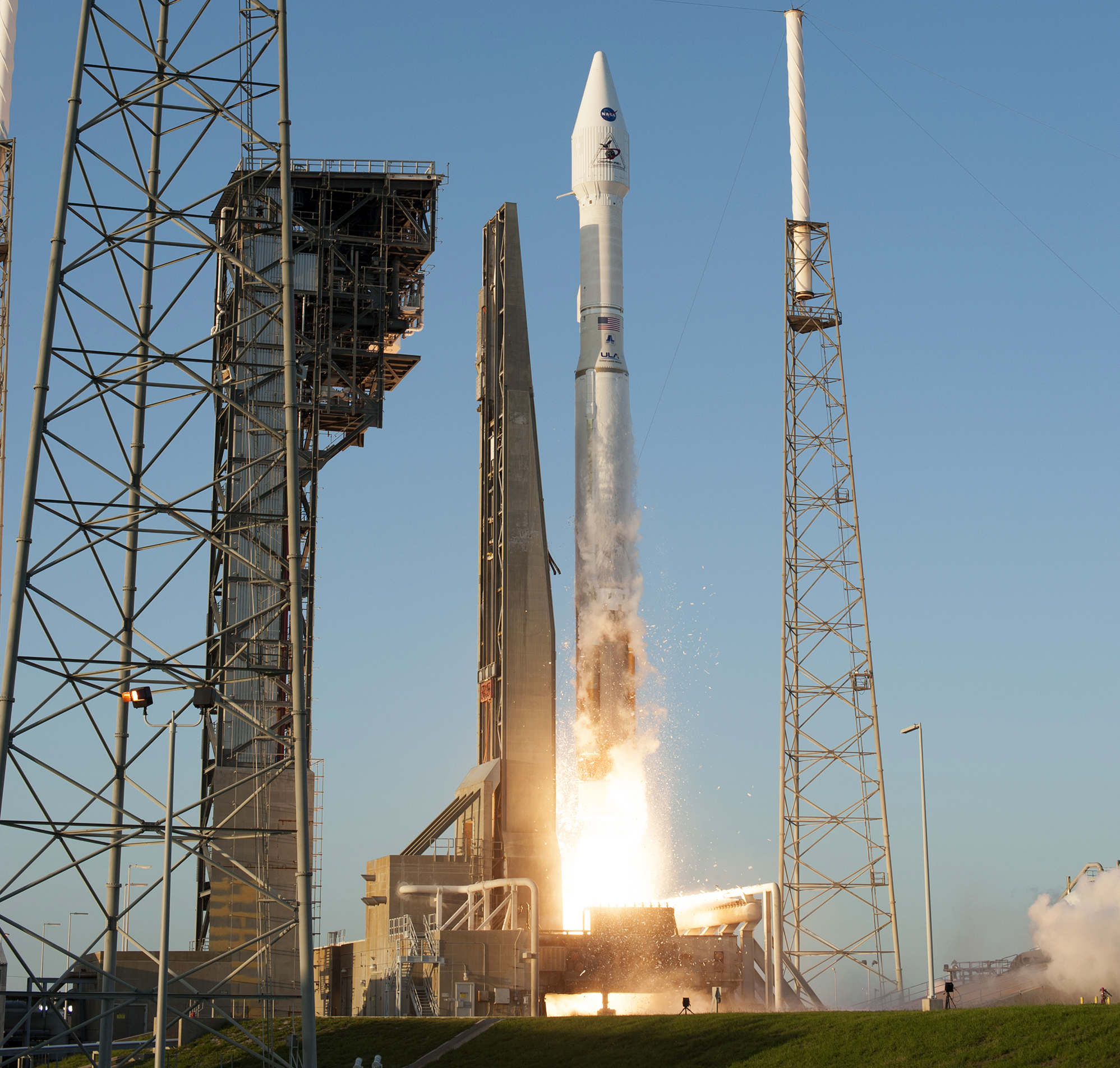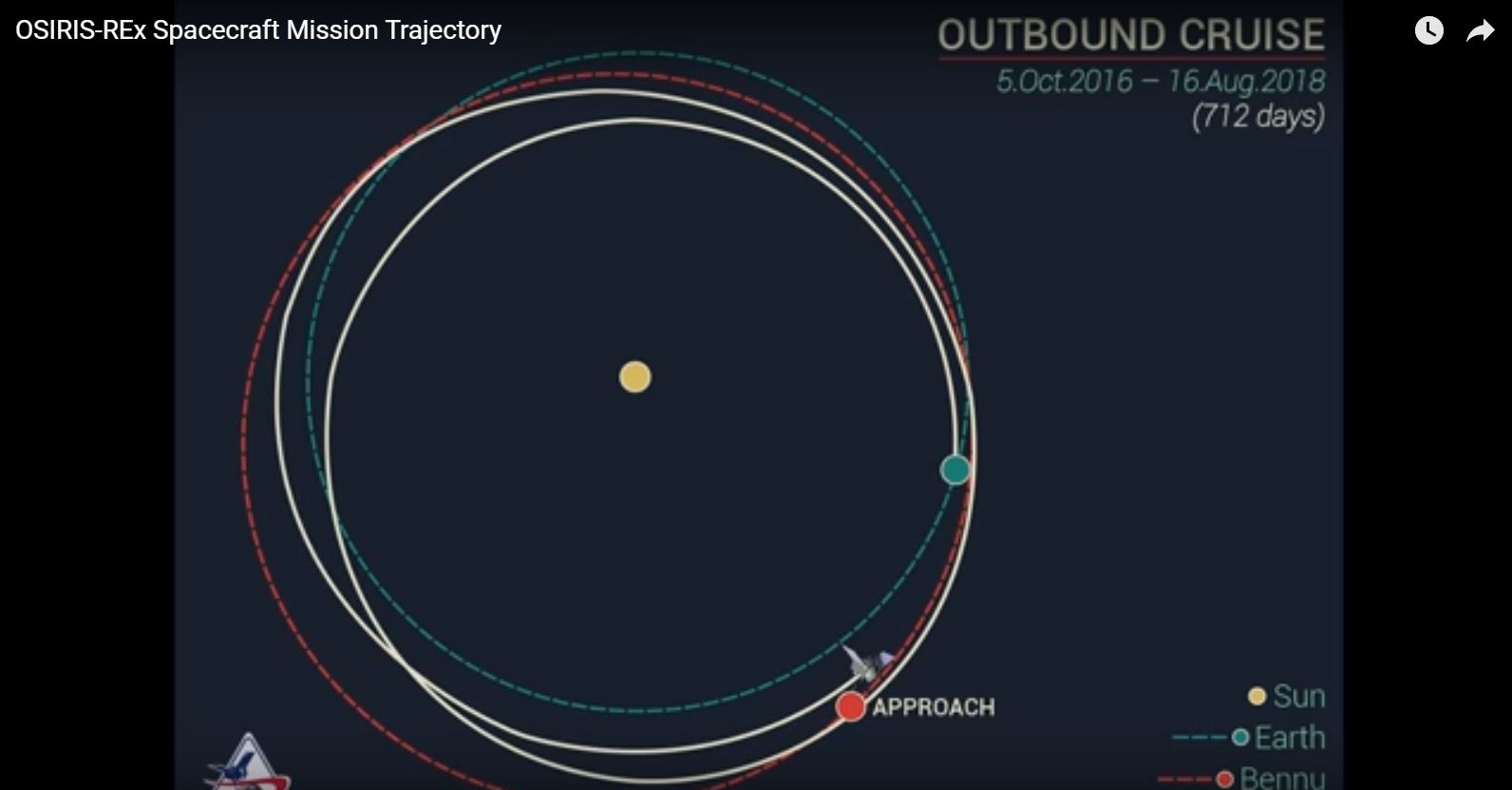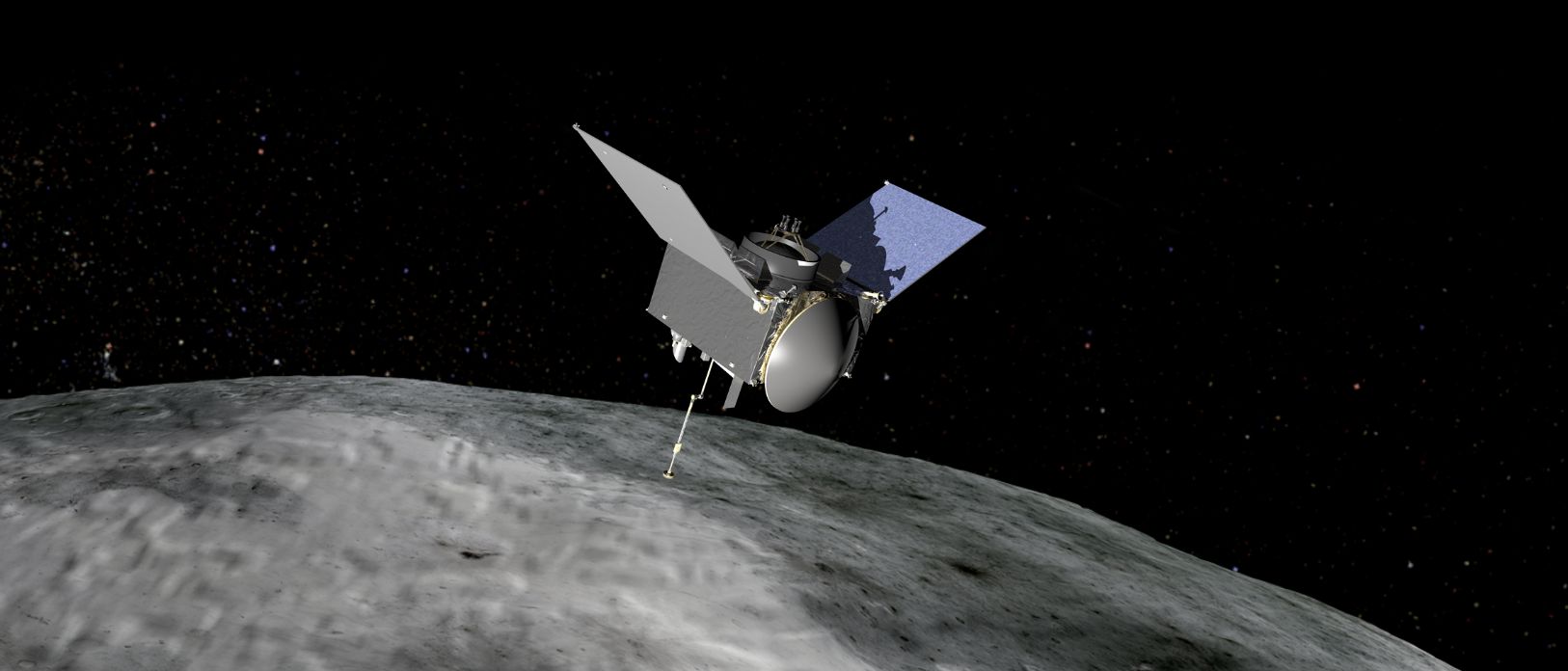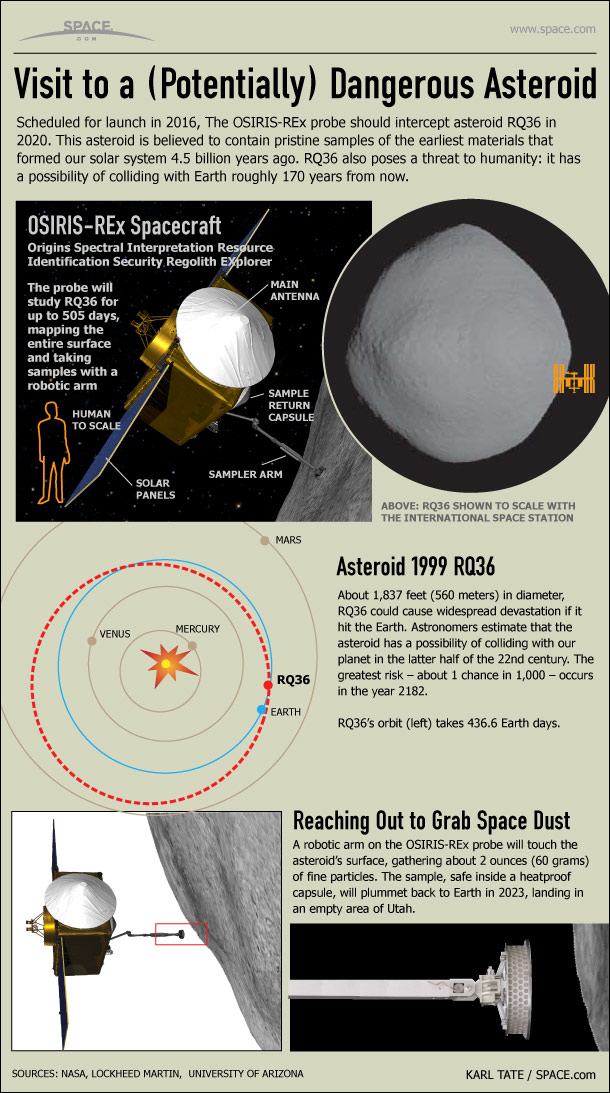The Journey Begins: NASA's Asteroid-Sampling Probe Has a Long Path Ahead

CAPE CANAVERAL, Fla. — NASA's OSIRIS REx mission has officially kicked off its seven-year, round-trip journey to an asteroid.
The space probe left Earth last night (Sept. 8) when it successfully lifted off from Cape Canaveral's Complex 41 in Florida, atop a United Launch Alliance Atlas V rocket.
OSIRIS-REx (which stands for Origins, Spectral Interpretation, Resource Identification, Security-Regolith Explorer) catapulted into space at 7:05 p.m. EDT (2305 GMT) yesterday, the first extraterrestrial step in its voyage to the asteroid Bennu and back. [Launch Photos: NASA's OSIRIS-REx Asteroid Mission Blasts Off]
"Tonight is a night for celebration," NASA Chief Scientist Ellen Stofan said at the post-launch news conference. "We are on our way to an asteroid."
"A safe, smooth, slow high-five"
When NASA started looking for an asteroid to sample, one of its prime requirements was to find one located not too far from our planet. Bennu loops around the sun every two years, in an orbit very similar to Earth's. Bennu can get as close to Earth as 279,000 miles (449,000 kilometers), just outside the orbit of the moon, though it only passes this close every six years. Today, the asteroid is only about 140 million miles (225 million km) from Earth.
"By virtue of the mission design, we're going to an asteroid with a similar trajectory to Earth," principal investigator Dante Lauretta said in a mission briefing Tuesday (Sept. 6).
Of course, OSIRIS-REx won't be taking a straight path to its target. Bennu's orbit is titled about 6 degrees compared to Earth's. Next year, the spacecraft will fly by Earth again, relying on the planet's gravity to help shift its orbital angle.
Breaking space news, the latest updates on rocket launches, skywatching events and more!

In August 2018, nearly two years after leaving Earth, OSIRIS-REx will reach Bennu. Its instruments will start thoroughly mapping the asteroid, a project that will take anywhere from 18 months to two years. The spacecraft will carefully maneuver around the small, spinning asteroid, taking detailed photographs that will detect penny-size objects on the surface. Using these observations, scientists will select the best candidate site from which to collect a sample.
Once the site is selected, OSIRIS-REx will slowly drift down toward the asteroid. Rather than touching down on the unstable surface, the spacecraft will extend its 11-foot (3.15-meter) Touch-and-Go Sample Acquisition Arm (TAGSAM). A burst of nitrogen gas will stir up loose material on the surface, lofting it upward into the collection container at the tip of the arm. Then OSIRIS-REx will back away from the asteroid into the vacuum of space.
"We'll be able to match the rotation speed and do a safe, smooth, slow high-five," OSIRIS-REx Deputy Program Scientist Christina Richey said at the science press conference on Tuesday.

To accomplish its scientific goals, TAGSAM needs to collect at least 2 ounces (60 grams) of material, though it can hold as much as 4.4 pounds (2 kilograms). To calculate that mass, OSIRIS-REx will make a controlled spin to produce forces that allow scientists to "weigh" the material. If the brief kiss from OSIRIS-REx doesn’t collect a large enough sample on the first go, the spacecraft carries another two canisters of gas for a second and, if necessary, third attempt.
If additional material is required, the first collection won’t be dumped into space, OSIRIS-REx project scientist Jason Dworkin told Space.com. Instead, it will be mixed with the second sample. The arm will drop the samples into a storage capsule on board the spacecraft.
Once OSIRIS-REx gathers sufficient material, its science operations will be complete.
"There are no other science operations after the sample is stowed," Dworkin said at Tuesday's mission briefing. "It's all about keeping that precious sample safe, doing nothing that can possibly jeopardize it."
The journey home

Once OSIRIS-REx has captured and safely stowed its sample, it will wait for Bennu and Earth to line up in March 2021. That's to take advantage of the closest approach of the two celestial bodies.
"We're lining it up to where it takes the least amount of fuel possible [to return to Earth]," Richey told Space.com.
After leaving the asteroid, OSIRIS-REx will begin its 2.5-year journey home, making two loops around the sun before it reaches Earth in September 2023. As it draws close, the spacecraft will release the sample return capsule, which will plummet through Earth's atmosphere at more than 27,000 mph (43,452 km/h), protected by its heat shield. A parachute will deploy 1.9 miles (3 km) above the surface, and the tiny capsule will drift down for a soft landing at the Utah Test and Training Range about 80 miles west of Salt Lake City. The capsule will then make its final journey to Johnson Space Center in Houston, where scientists will spend approximately two years analyzing the material blown from the surface of the asteroid.
In the meantime, OSIRIS-REx will continue to orbit the sun. Depending several factors, including the amount of remaining fuel, the probe may be able to be repurposed for other scientific goals, NASA representatives said during the briefing. However, with its sample return capsule back on Earth, it will no longer be able to collect other material from the solar system.
"It's really quite a milestone," NASA Planetary Science Division Director Jim Green told the press after the launch. When it comes to planetary science, "we just keep hitting it out of the ballpark."
OSIRIS-REx continued that grand tradition.
"Tonight we hit it off the face of the Earth," he said.
Follow Nola Taylor Redd on Twitter @NolaTReddor Google+. Follow us at @Spacedotcom, Facebookor Google+. Originally published on Space.com.
Join our Space Forums to keep talking space on the latest missions, night sky and more! And if you have a news tip, correction or comment, let us know at: community@space.com.

Nola Taylor Tillman is a contributing writer for Space.com. She loves all things space and astronomy-related, and always wants to learn more. She has a Bachelor's degree in English and Astrophysics from Agnes Scott College and served as an intern at Sky & Telescope magazine. She loves to speak to groups on astronomy-related subjects. She lives with her husband in Atlanta, Georgia. Follow her on Bluesky at @astrowriter.social.bluesky
